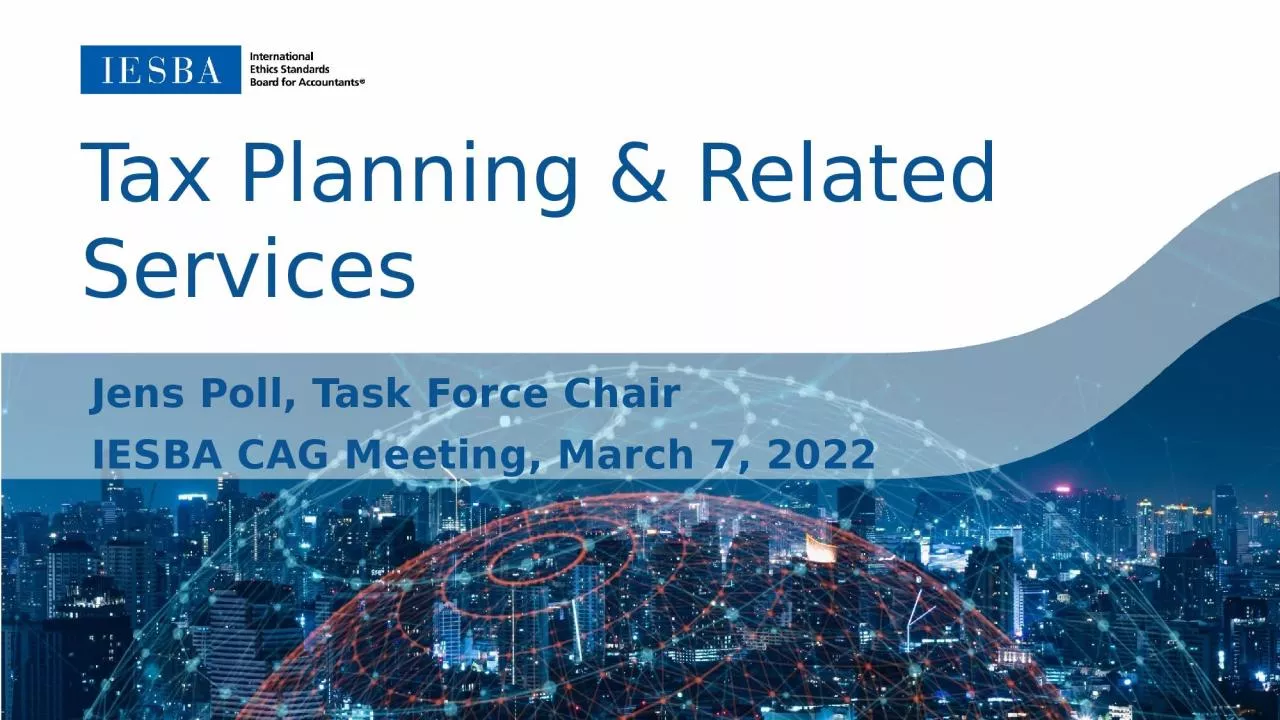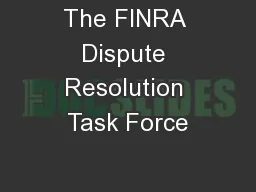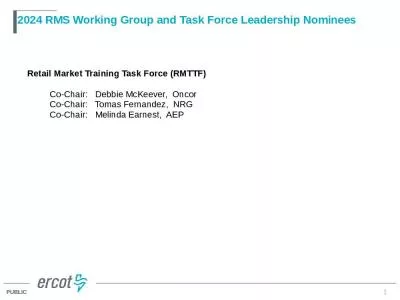PPT-Jens Poll, Task Force Chair
Author : olivia | Published Date : 2023-07-17
IESBA CAG Meeting March 7 2022 Tax Planning amp Related Services Objectives of the Session 2 To provide feedback on the Task Forces preliminary consideration of
Presentation Embed Code
Download Presentation
Download Presentation The PPT/PDF document "Jens Poll, Task Force Chair" is the property of its rightful owner. Permission is granted to download and print the materials on this website for personal, non-commercial use only, and to display it on your personal computer provided you do not modify the materials and that you retain all copyright notices contained in the materials. By downloading content from our website, you accept the terms of this agreement.
Jens Poll, Task Force Chair: Transcript
Download Rules Of Document
"Jens Poll, Task Force Chair"The content belongs to its owner. You may download and print it for personal use, without modification, and keep all copyright notices. By downloading, you agree to these terms.
Related Documents














